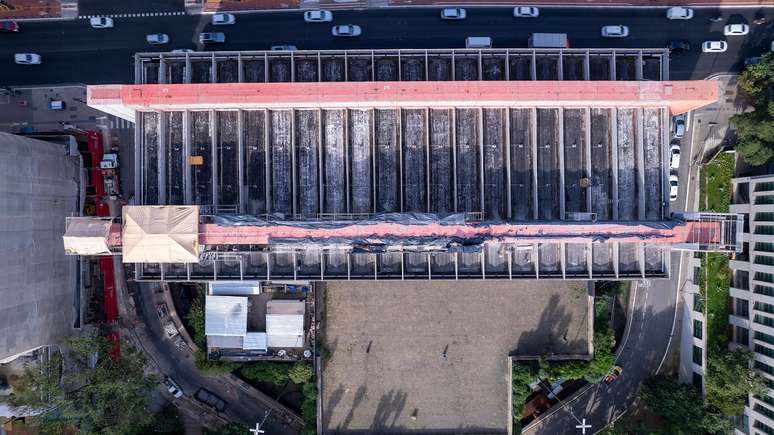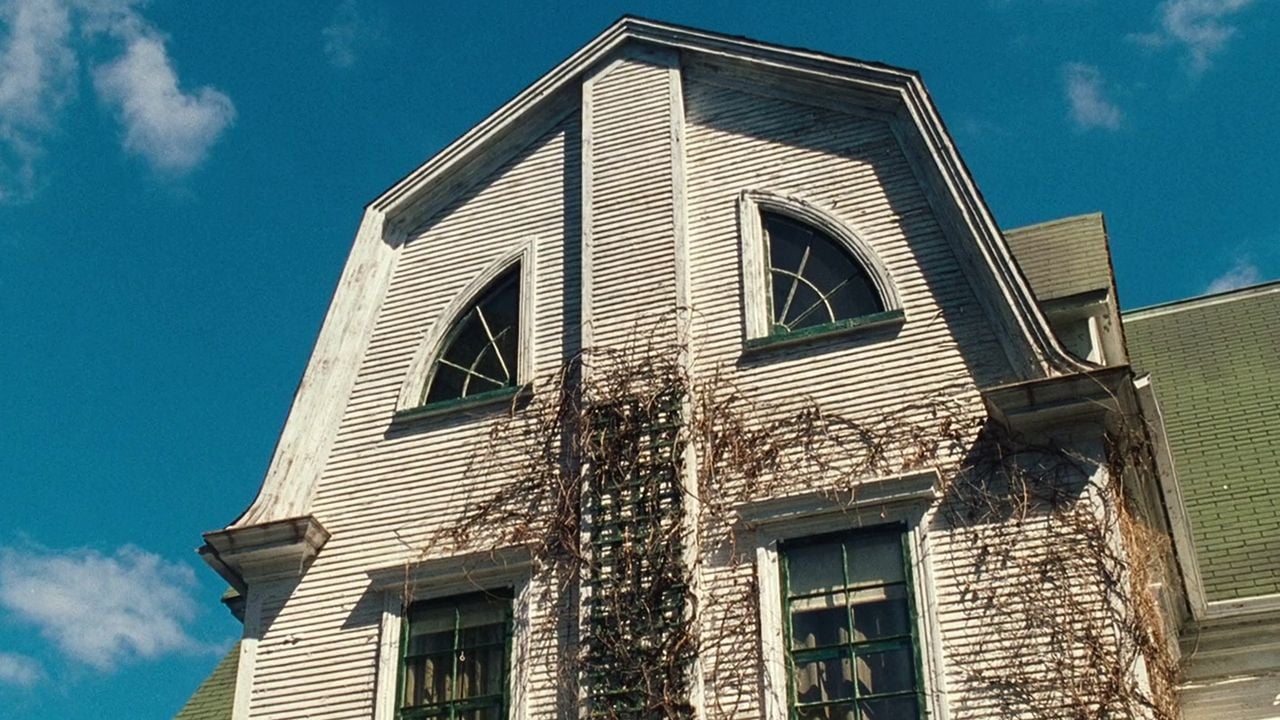After the restoration of the building, red will return: developed by Azkonobel, the color recovers the original pattern and has been called Interfine 878 Red MASP
Since April 22, the Museum of Arts of São Paulo Assis Chateaubriand (MASP) has been undergoing restoration work on the building: In addition to closing the free span, the traditional red color of the pillars was eliminated, leaving the construction in shades of grey. The interventions aim to resolve the significant wear and tear caused by the action of time and exposure to atmospheric agents and also include the restoration and repainting of the pillars and external beams, as well as the roof slab of the free span.
“It is the first time that these structures are subjected to a process that takes into account criteria and parameters for the restoration and conservation of the historical heritage. We are committed to applying scientific methodologies in all phases, maintaining the technical rigor that will also be applied during working outdoors,” he explains Miriam Elwingproject and architecture manager at MASP.
Conservation and restoration methodologies
Respecting the historical grandeur of the building, the reinforced concrete of the porticoes will be recovered with the use of two chemical products nanotechnology which act directly on the steels of the structure. The former eliminates compromised rust and the latter creates protection to prevent future corrosion. – the substances act non-invasively, without the need to completely expose the bars. To monitor and avoid potential adversities, monitoring sensors have been installed in the facilities.
After solving the steel problems, the concrete recomposition where it was removed. In order to avoid a non-homogeneous appearance with the interventions, mortars with different pigmentations to adapt to the colors already existing in the concrete by MASP which, over time, has developed specific colours.
Red back!
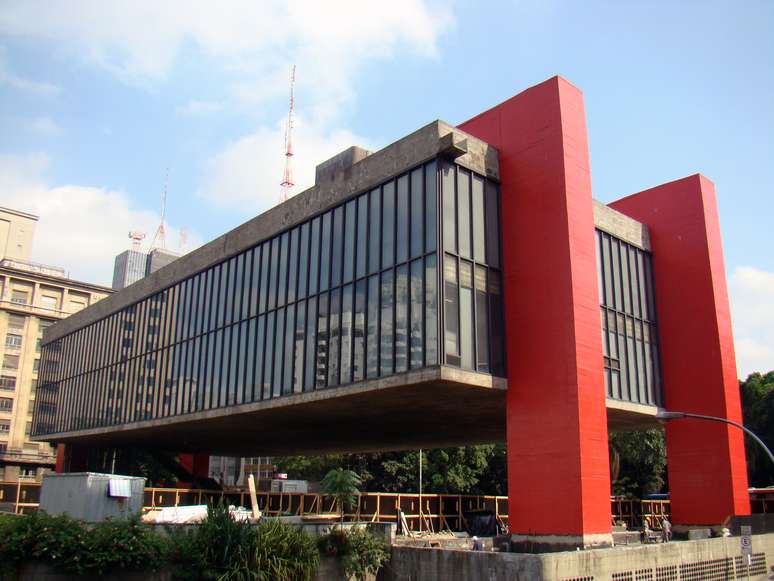
To recover the Redarrived at the arcades in 1990 to protect the concrete structure and was a choice of architect Lina Bo BardiAkzoNobel has developed a high-performance paint system that guarantees resistance and durability, respecting the aesthetic quality of MASP’s symbolic red.
Three branded products will be used in the project: Intergard 2001 epoxy paintOR Interseal 670HS epoxy coating and the Interfine 878 Polysiloxane finishwhich gives painted surfaces, among other characteristics, ease of removing dirt.
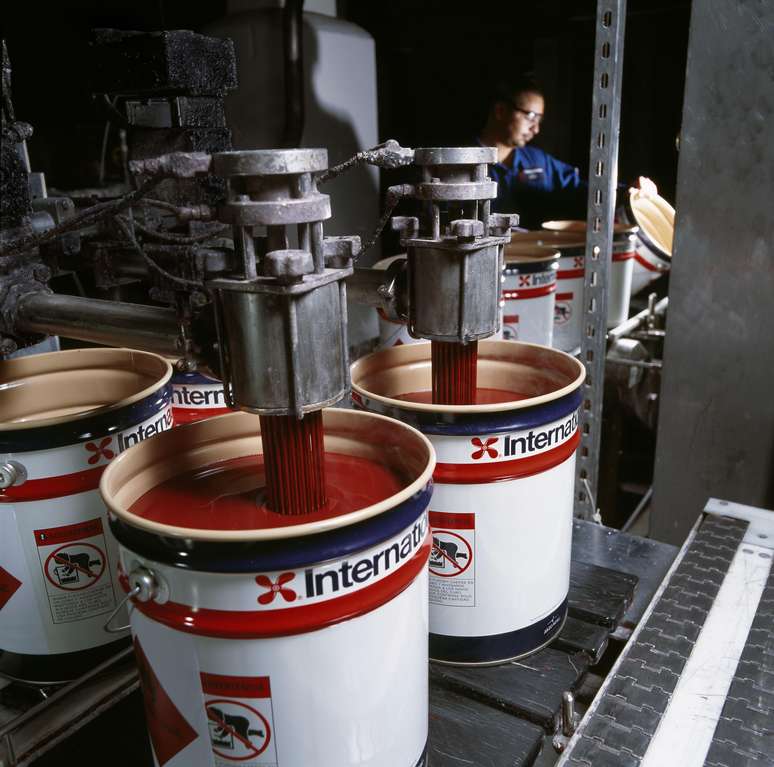
“This will be the first major museum project with polysiloxane coating on concrete in Brazil. The product has very high resistance to weathering and degradation, offering excellent color and gloss retention to maintain one of the highest visual and aesthetic, when compared to conventional coatings on the market”, he explains Giuliano TramontiniCommercial Director of Marine, Protective and Yacht Coatings in Latin America at AkzoNobel.
To maintain the colorimetric identity, a team of brand colorists worked to achieve the original color standard. The shade was called Interfine 878 Red MASP. To reapply the red color, AkzoNobel also developed a paint system that offers extreme resistance in order to prolong the useful life of the renovation: the entire process was monitored and approved by the body IPT – Technological Research Institute.
MASP Conservation Plan
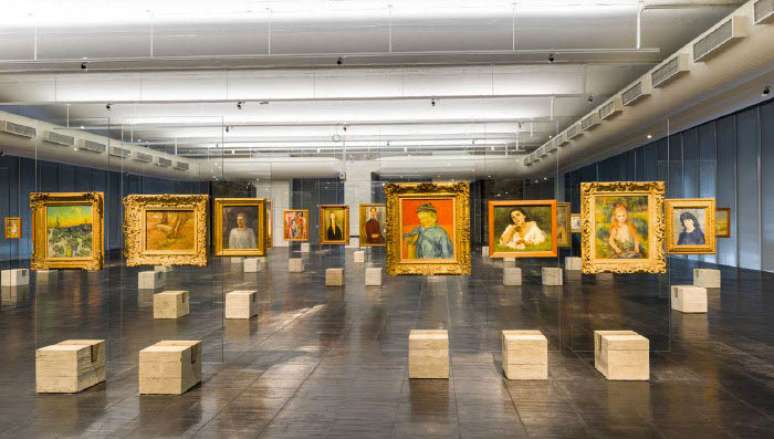
The portico restoration project began with a historical research and documentary reconnaissance on the structure of the building on all the interventions carried out on its pillars and beams, from its construction to the current period. They have also been developed field tests to define the procedures removal of existing paint and recovery of concrete, in order to preserve its consistency and color. Several tests were also carried out to restore the red color of the porticoes.
Services will also be carried out as part of the actions maintenance and conservation of the insole covering the free space. This step includes the cleaning, pathological mapping and recovery and restoration tests of reinforced concrete. The interventions will be carried out gradually to minimize the impact of the museum’s operation and not compromise public access to the space. During the construction period, a fitting will be installed in the cavity for safety measures.. In the future, the institution will carry out the restoration of the benches, the installation of safety railings, a new waterproofing of the water features, planters and the floor, as well as adaptation to accessibility standards.
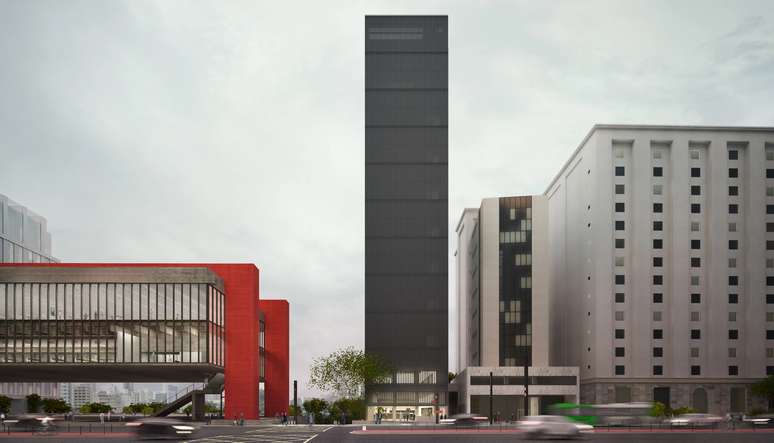
“The current administration of MASP, in collaboration with partner companies and sponsors, is dedicating every effort to preserve and honor the legacy of the Palazzo Lina Bo Bardi, of immense importance for the city and the entire country”, underlines Heitor MartinsChief Executive Officer, MASP.
MASP’s conservation plan aims to deliver the restored historic Palazzo Lina Bo Bardi next to the expansion project, which consists of a new building called Pietro Maria Bardi, which will have 14 floors occupied by five exhibition galleries and two multipurpose galleries, expanding the museum’s exhibition surface area by 66%. The project is by the Metro Arquitetos studio. With the union of the two buildings, MASP will offer an expanded facility for exhibitions, educational programs and restoration services, allowing the public greater access to culture.
Source: Terra
Ben Stock is a lifestyle journalist and author at Gossipify. He writes about topics such as health, wellness, travel, food and home decor. He provides practical advice and inspiration to improve well-being, keeps readers up to date with latest lifestyle news and trends, known for his engaging writing style, in-depth analysis and unique perspectives.

